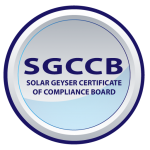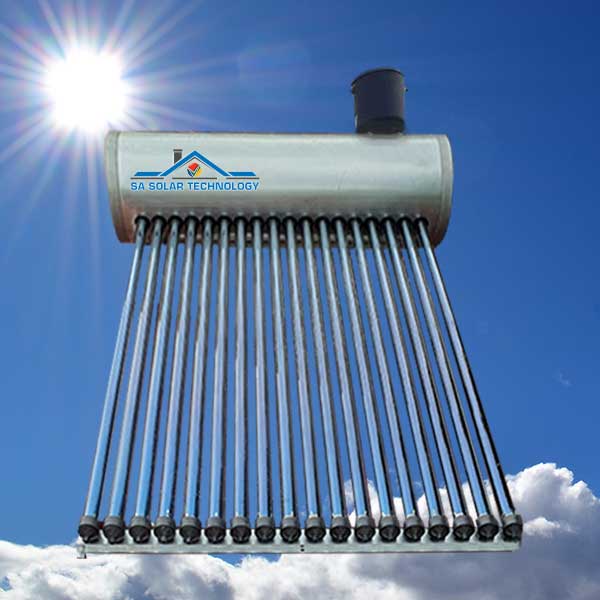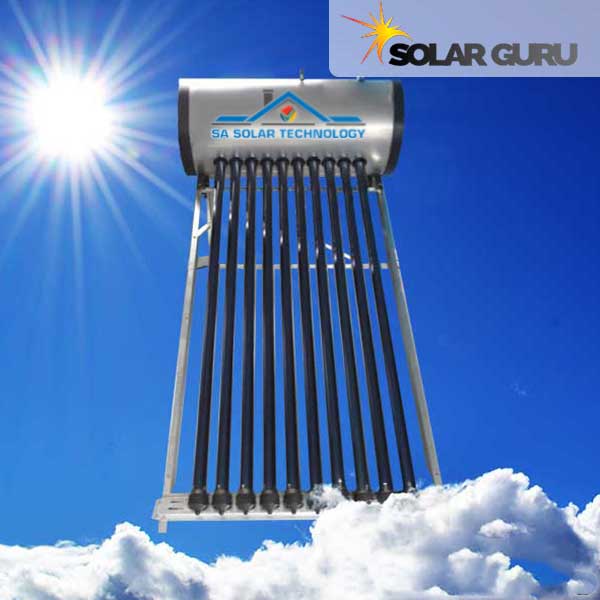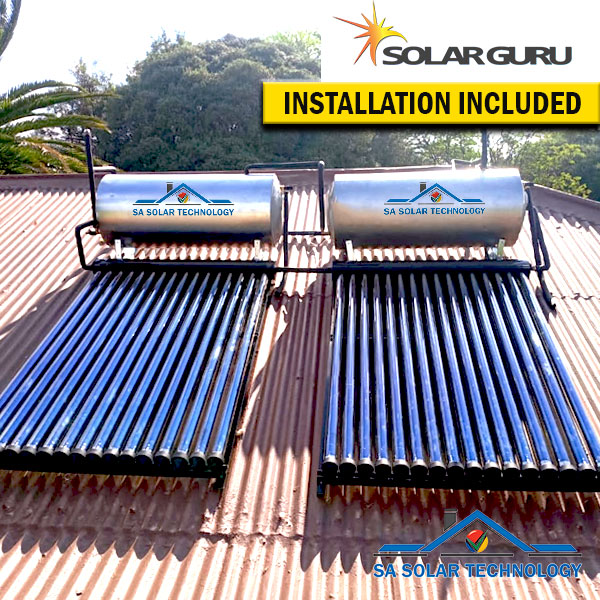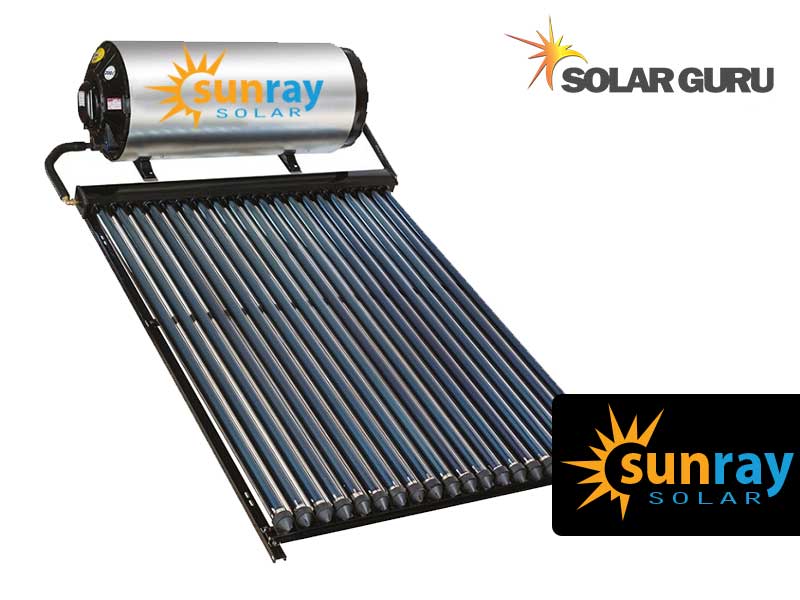
200 Liter Sunray High Pressure Solar Geyser
March 6, 2018
Sunray Conversion
March 6, 2018Sunray Direct System
The Sunray Direct System is used in frost-free locations, where the ambient temperature never falls below 5 degree Celsius and where the water quality is good (less than 600ppm Total Dissolved Solids/Minerals).
Solar Water Heaters – Close Coupled & Split – Direct System
The Sunray Direct System is used in frost-free locations. Locations where ambient temperature never falls below 5 degree Celsius and water quality is good (less than 600ppm Total Dissolved Solids/Minerals).
A Sunray Direct System is where the water used in the house (hot water). The water then circulates through the solar collector panels, or Sunray solar vacuum tubes manifold. Resulting in the transferring solar energy into the storage tank of the solar water heater.
Installment of a direct system as a Split System (pumped or thermosyphon circulation methods). A Split System is where the solar water heater is installed inside the roof. A Split System can be installed away from the solar collector panels or solar vacuum tubes.
Installation as a Close Coupled System (thermosyphon circulation) because the solar water heater is installed outside on the roof. Installation as a Close Coupled System can be installed higher than the solar collector panels or solar vacuum tubes (see section Circulation Methods).
Product Features
The Sunray Sunray Solar Water Heater Direct System complies with SANS 1307, is SABS 400kPa approved and can be used as a close coupled system or split system.
The inner cylinder is manufactured from 2mm steel and thermos fused porcelain enameled for cylinder longevity and hygiene.
Polyurethane insulation between the inner cylinder and outer casement reduces energy and heat loss.
2 x magnesium sacrificial anodes are fitted for corrosion protection.
The solar water heater is designed for domestic hot water application in conjunction with one or more solar collector panels or solar vacuum tubes.
The two extra water connections required for connecting solar collector panels or connecting the manifold above the solar vacuum tubes, and the booster element, ensures that the solar water heater can be used as a conventional electric water heater and as a solar water heater.
The solar water heater thermostat will automatically switch on when the incoming hot water from the solar collector panels or from the manifold above the solar vacuum tubes, has not reached the set temperature setting on the thermostat. This will occur on cloudy days and at night when the water temperature drops in the solar water heater or when hot water is drawn off and cold water enters the solar water heater.
Product Installation Data
When the solar water heater is installed in the roof, it must be installed in compliance with SANS 10106 Solar Water Heater Specification complete with a Temperature & Pressure Valve (Safety Valve), Drain Cock (both supplied with the solar water heater), Multi Pressure Control Valve 400kPa, Drip Tray and Sunray Vacuum Breakers on the cold water supply and hot water supply.
If the solar water heater is installed in the roof, the following minimum installation clearance must be allowed for on each side of the solar water heater in order to remove the element or thermostat and the anode/s from the opposite end:
- 150lt – 450mm
- 200lt/250lt – 920mm
If the solar water heater is installed on the roof, careful inspection must be carried out to ensure that the roof can support the weight of the entire installation system once it is filled with water. Care must be taken where the front feet of the solar water heater are located. The feet should be located over a tile batten, purlin or similar for maximum strength.


